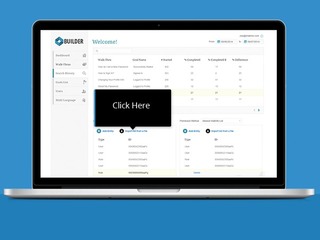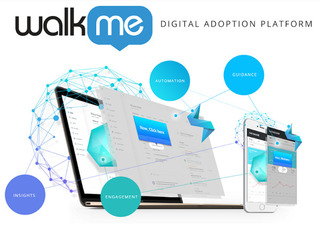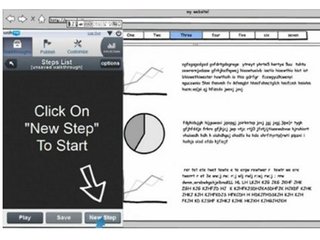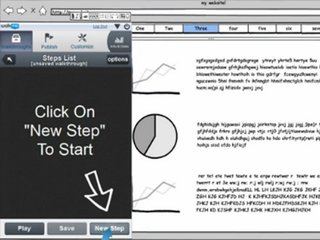How does Course Hero make money?
The company offers a freemium model, where users can pay to access more content and ask questions
Read more...
Digital adoption platform WalkMe has gone through a number of iterations since being founded in 2012. When it raised funding $11 million in 2014, its mission was to help people navigate the Internet by allowing companies to create walkthroughs of their websites for visitors and employees. A couple of years later, when the company raised a $50 million round, it was about assistance, going beyond navigation to help the user do more on the site.
In its current iteration, WalkMe helps simplify the user experience on B2B applications through insights, engagement and guidance capabilities through machine learning and artificial intelligence. Essentially, what it does is it reverses the way that people interact with software, making it so that the applications better understand the user, rather than the other way around, in order to make the experience as efficient as possible.
To make money, the company deploys a SaaS model, offering a subscription-based software licenses to its customers.
"We offer various pricing packages based on the number of users and the needs of the customer. The pricing model is per user, per month. WalkMe is selling to multiple verticals and industries, as well as all sizes of companies, including 30 percent of the Fortune 500," Rephael Sweary, co-founder and president of WalkMe, told me.
On its website, WalkMe outlines the two plans it offers. First is its Basic Plan, which includes three walk-thrus, up to five steps per walk-thru, 300 assists per month and basic online support. The other option is its Custom Plan, which comes with unlimited walk-thrus, unlimited steps per walk-thru, unlimited assists, multiple support options, multiple domains, full help desk integration, design flexibility and analytics, among other things.
While no prices are listed, WalkMe can cost anywhere between "a few cents to a few dollars per user per month, depending on the use case," Sweary said. "The cost for an external user such as a customer, who uses WalkMe seldom, is significantly lower than the cost for an internal user, who uses WalkMe a few times a day, such as an employee."
A SaaS model works best for WalkMe, he told me, "Because it aligns the value with the pricing and guarantees high ROI on any project.
"It also ties the customer project success to WalkMe interests. If the customer is not happy he will stop the subscription," said Sweary. "I think the strong focus to make sure the customer is always happy, because it is a subscription and not an asset sale) makes us a better organization, with a better product, better service and overall stronger commitment for customer success which ultimately leads to a stronger success for the company."
WalkMe has raised $217.5 million in venture funding, most recently a $50 million Series F round from EDBI, Insight Venture Partners and Mangrove Capital Partners. Other investors include Scale Venture Partners, Giza Venture Capital and Gemini Israel Ventures.
The company offers a freemium model, where users can pay to access more content and ask questions
Read more...The company sells a premium version of its free product to parents, schools and districts
Read more...Initially a platform for renting textbooks, it now makes 90% of revenue from software subscriptiions
Read more...Startup/Business
Joined Vator on
WalkMe enables all online publishers and ISVs to create interactive on-screen 'Walk-Thrus' that assist end-users to quickly and easily complete even the most complex tasks.
Users receive clear and error-proof on screen instructions displayed as sequential balloon hints within the website or app, while they perform the actual process from start to finish.
Think of it as if you are sitting right next to your users and guiding them through each task, step-by-step, on any site platform.
Benefits
WalkMe eliminates end-user confusion which directly reduces the number and the length of support calls and the investment needed to create or update user manuals and instructional videos.
More importantly, publishers who have implemented WalkMe report dramatic increase in user task-completion, increased conversions, as well as end-user satisfaction and greater overall site utilization.
Other Considerations
Using WalkMe’s system does not require any modification or integration to the underlying software. The 'Walk Thru' creation process is simple and does not require any technical skills.
WalkMe supports all popular browsers (Chrome, Explorer, Safari etc.) and does not require end-user download.
WalkMe is a software-as-a-service product, offering a wide pricing scale. WalkMe offers its product free for “start-up” sized customers, trending upwards to our silver package for small businesses, leading to a customized quote for WalkMe’s largest customers. Self-hosting options are available.
WalkMe complies with the strictest security standards and has been certified by a 3rd party security firm, which satisfies our data sensitive customers and the financial institutions we are currently servicing.

Joined Vator on
Rephael Sweary is the co-founder and president of WalkMe, the pioneer of the Digital Adoption Platform (DAP), helping to transform the user experience in today’s overwhelming digital world.






